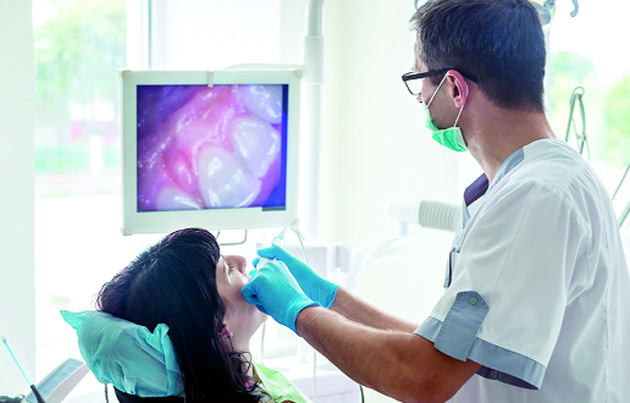Dr Mandeep Kaur
Artificial intelligence (AI) is the branch of computer science dedicated to building systems to perform tasks that normally require human intelligence. Advances in AI offer healthcare benefits reducing complications and improving quality of life. Machine Learning (ML) and Deep Learning (DL) is a branch of AI in which systems learn to perform intelligent tasks and provide a helping role for dentists to increase the accuracy of diagnosis.
AI Applications in dentistry
Oral Radiology: Radiographs are digitally encoded and translated into computational language. AI mostly uses algorithms for automatic recognition of complex patterns in imaging data. Therefore, AI can be used as an effective tool to help clinicians make more reproducible assessments of radiograhs. AI in caries, periodontal diseases, root fractures, periapical and maxillary sinus pathologies, odontogenic cysts and tumors or diagnosis of TMJ diseases can decrease the workload of dentists.
Oral Surgery: Artificial neural network (ANN) model was developed to predict the probability of facial swelling after extraction. Convolutional Neural Networks (CNNs) can automatically detect and classify fractures on radiographs. ANN model can distinguish between TMJ irregularities and normal joint and detect anterior disc displacements. AI algorithm has the potential to improve the reliability of TMJ-MRI interpretation. CNN is effective in classifying implant systems in radiographs. AI algorithm made predictions with twice the accuracy of dentists in the results obtained regarding the quality of bone. Possible robotic applications are implemented in this field. AI in orthognathic surgery provide improvements in treatment planning and patient satisfaction.
Prosthetic Dentistry: AI in prosthesis production helps in designing the best aesthetic prosthesis by evaluating anthropological calculations face measurements, and patient expectations. When standard CAD/CAM technologies are applied in implant prosthesis cementation, various problems can arise, such as positional errors, cementation errors. AI can help eliminate these errors and time losses. AI model in the manufacture of zirconia implants for posterior teeth has also gained high accuracy.
Periodontology: Promising results have been shown as AI models used for classification of periodontal conditions, detection of PBL, and classification of peri-implant diseases and conditions show comparable and better results than manual analysis of PBL. CNN algorithm was developed to classify microbial dental plaque in intraoral photographs.
Orthodontics: AI models may offer a potential alternative to existing methods in estimating erupted tooth size and provide diagnostic support for mixed dentition analysis in tooth patterns. AI technology has been developed in automatic cephalometric anatomical points and skeletal relationship classification to reduce the burden on the clinician and save time. Using AI algorithms can save orthodontists time and facilitate diagnosis.
Endodontics & Restorative dentistry: The role of AI in the diagnosis and treatment planning in endodontic is increasing. CNN algorithms were created and reported that it had high accessory root discrimination performance on panoramic radiographs. Root canals can be detected and classified in real-time via software. Position of the file can be reliably determined using AI while detecting the working length of canal. AI can provide assistance in recognizing that cannot be detected on radiographs due to noise, artifact, and low contrast in images.
Pediatric Dentistry: Oral health status and treatment needs were estimated by processing the data with ML algorithms. Software that can predict individual pain level and analgesia responses for postoperative pain management has been developed by using AI models. DL-based AI model has been used to detect plaque in primary teeth. Permanent tooth germs were detected with a DL-based approach in panoramic X-rays, using the YOLOv4 model.
Oral Pathology: CNN has been shown to be a promising aid in diagnosis of head and neck cancer. CNN shows potential for detecting tumoural tissues in tissue samples or on radiographs. CNN algorithm to distinguish between two important tumours with similar radiologic appearance but different clinical properties: Ameloblastomas and keratocystic odontogenic tumours.
Forensic Dentistry: DL model outperformed the ML model and the right third molar tooth mesial root length in age identification. It is emphasized that the training dataset should be expanded to include more radiographs to further refine, diversify, and bring the algorithms into clinical practice.
AI has the potential to revolutionize both healthcare and dentistry. Thanks to this link between dentists and technology, current developments will progress rapidly and become more useful.
(The author is Assistant Professor Oral Pathology & Microbiology Indira Gandhi Govt Dental College, Jammu)
Trending Now
E-Paper


